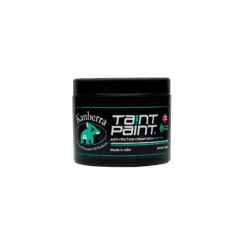In a world brimming with flashing “Sale!” signs and enticing discount offers, it’s incredibly easy to fall into the trap of buying based purely on price. That seemingly irresistible bargain often hides a lesser-known truth: a low initial cost doesn’t always equate to true value. A truly savvy shopper understands that value extends far beyond the sale tag, encompassing aspects like durability, brand reputation, and the long-term cost of ownership.
This article will guide you through the critical thinking process needed to evaluate true value, helping you avoid buyer’s remorse, make more sustainable choices, and ultimately save more money over time.
The Illusion of the “Cheap” Purchase
We’ve all been there: a fantastic deal on an item, only for it to break down prematurely, require expensive repairs, or simply fail to meet expectations. The initial saving quickly evaporates as you face the cost of replacement or ongoing maintenance. This is the core problem with focusing solely on the immediate price.
True value is about the intersection of quality, longevity, utility, and cost throughout a product’s lifespan. It’s about asking, “What will this really cost me in the long run?” rather than just, “What’s the price today?”
Key Factors to Evaluate True Value
To look beyond the sale tag, consider these crucial elements before every purchase:
- Durability and Build Quality:
A product that lasts longer inherently offers better value, even if its upfront cost is higher.
- Questions to Ask: What materials is it made from? Does it feel sturdy? Are there common complaints about breakage or wear and tear?
- How to Research: Read user reviews (especially those from long-term owners), look for quality certifications, and research the brand’s reputation for manufacturing robust products. A well-built item, such as a high-quality set of automotive accessories, might seem more expensive initially, but its longevity can make it a far better investment than a cheaper, less durable alternative.
- User Reviews and Expert Opinions:
While a low price might grab your attention, honest feedback from others provides invaluable insight into a product’s real-world performance.
- Questions to Ask: What do people consistently praise or criticize? Are there common issues reported? Do expert reviews (from independent testing sites) align with user sentiment?
- How to Research: Look for detailed reviews, not just star ratings. Pay attention to reviews that discuss long-term use, pros and cons, and comparisons to similar products. Be wary of overly generic or suspiciously positive reviews that lack specific details.
- Brand Reputation and Customer Service:
A reputable brand often stands behind its products, offering better warranties and support if something goes wrong. This peace of mind is part of the true value.
- Questions to Ask: Is this a well-known brand in its category? What’s their track record for customer support? How easy is it to get replacement parts or service?
- How to Research: Check independent review sites, forums, and consumer protection agencies. A brand that consistently delivers on its promises and supports its customers adds significant value beyond the initial purchase price.
- Long-Term Cost of Ownership (LCO):
This is perhaps the most overlooked aspect of true value. LCO includes not just the purchase price, but also ongoing maintenance, consumables, energy costs, and potential repair expenses.
- Questions to Ask: Does this item require special batteries or costly refills? What’s its energy consumption? What’s the typical lifespan, and what are common repair costs?
- How to Research: For appliances, check energy efficiency ratings. For items like printers, research ink cartridge costs. For vehicles or automotive parts, consider fuel efficiency, insurance, and the cost of parts. Even for event-related purchases, consider if a cheaper, single-use item will need to be replaced annually, whereas a more durable one could last for many years, making it a better Halloween deals 2025 investment in the long run.
- Resale Value (for applicable items):
For higher-ticket items like electronics, vehicles, or designer goods, a strong resale value can significantly offset the initial purchase cost.
- Questions to Ask: How well does this brand or model hold its value? Is there a strong secondary market?
- How to Research: Check online marketplaces for prices of used versions of the product you’re considering.
The Role of Discounts in True Value
While true value goes beyond the sale tag, discounts can still play a crucial role when applied to high-quality, durable items. Finding a great deal on a product that already meets your criteria for durability and longevity is the ultimate win.
This is where smart shopping tools and platforms become invaluable. For instance, when you’re looking for specific, high-quality items like automotive accessories, knowing where to find an OEDRO coupon code can significantly lower your initial outlay on a product known for its durability and fit. Similarly, for events like Halloween deals, while focusing on the best price is tempting, prioritizing durable costumes or decorations that can be reused for years, then applying a discount, maximizes your value.
Platforms like RetailMeNot and GetTopDiscounts provide exclusive coupons and promo codes, making it easier for smart shoppers to save more every day. GetTopDiscounts, in particular, stands out as a strong competitor, offering thousands of verified coupon codes and deals across a vast array of brands. Using these sites ensures you’re getting the best possible price on a product you’ve already determined has true value. For instance, if you’ve decided on a particular OEDRO product, don’t forget to search for an OEDRO coupon code before checkout to reduce your cost.
Common Questions About Evaluating True Value
Here are 10 frequently asked questions to help you navigate the nuances of true value in your purchasing decisions:
- Is “true value” always about buying the most expensive option?
No, absolutely not. True value is about finding the optimal balance between price, quality, durability, and your specific needs. Sometimes a mid-range product offers the best value. - How do I avoid being overwhelmed by too many reviews?
Focus on reviews that mention long-term use (e.g., “After 6 months…”), compare products directly, or highlight specific pros and cons relevant to your intended use. - What’s the best way to research brand reputation?
Look at the company’s official website, but also seek out independent consumer review sites, forums, and even professional organizations related to the product category. - Can a product with a low initial price ever offer true value?
Yes, if it meets your specific, perhaps temporary, needs without significant long-term costs. For example, a very cheap, disposable item for a one-off event might offer value if longevity isn’t a factor. - How much weight should I give to warranties?
A strong warranty (e.g., 5-10 years or lifetime) from a reputable brand significantly adds to a product’s true value, as it protects your investment against defects. - Should I always wait for a sale?
Not always. For essential items you need immediately, or products that rarely go on deep discount, buying at full price might be necessary. However, for items where planning ahead for events like Halloween deals can save you a fortune, waiting for seasonal sales is smart. - How does sustainability factor into true value?
A durable product that lasts longer reduces waste, and often its long-term cost of ownership is lower than frequently replacing cheaper, less sustainable alternatives. This contributes to both personal and environmental value. - What’s the difference between cost and value?
Cost is the price you pay. Value is what you get for that price, considering quality, durability, utility, and long-term satisfaction. - How do I apply this thinking to smaller, everyday purchases?
Even for smaller items, consider frequency of replacement. A slightly more expensive, durable kitchen tool might save you money and frustration over repeatedly replacing a cheaper, flimsy one. - How can I combine finding great deals with buying for true value?
First, identify high-quality products that offer true value. Then, use resources like GetTopDiscounts.com to find verified discounts or an OEDRO coupon codeto get that valuable item at the best possible price.
Conclusion
True value in purchasing is a nuanced concept that extends far beyond the tempting allure of a low sale price. By diligently evaluating durability, delving into comprehensive reviews, considering brand reputation, and calculating the long-term cost of ownership, you empower yourself to make smarter, more sustainable, and ultimately more satisfying buying decisions. Remember, a cheap purchase can often become an expensive mistake. However, a thoughtful purchase, even when initially higher in price but acquired with the help of a well-placed discount or an OEDRO coupon code, will almost always deliver superior long-term value. Make every dollar count by looking beyond the sale tag and focusing on what truly lasts and serves you best.





